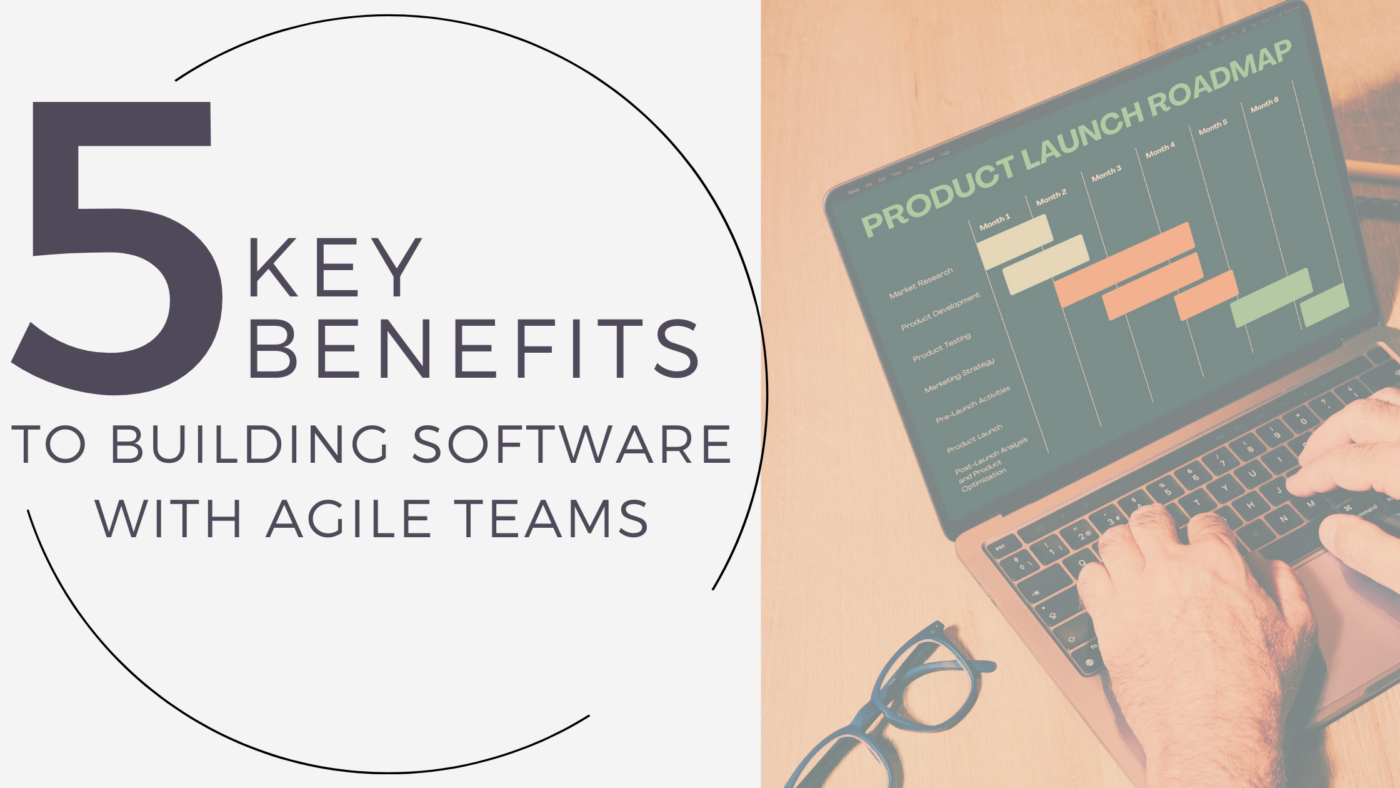
June 2, 2025
What’s an MVP? A simple guide to software development for non-tech founders.
November 4, 2024

Share:
“Agile” is a term that gets thrown around often when discussing the quickest way to develop software. But what does it actually mean? As it turns out, you get a different definition (and maybe a different dose of personal experience) depending on who you ask. Most would agree that “agile” refers to a common set of frameworks and processes (like Scrum, for example) that are based on the ideas espoused in the Agile Manifesto. Beyond that, your mileage may vary.
Here at Acklen, we’re big on thinking of “agile” in terms of principles and beliefs. Agile is a guiding philosophy for us. As such, we don’t subscribe to any one particular process or way of delivering software. Our approach is to leverage our agile beliefs, principles, and philosophy in a way that suits the need for the client or product we are working with.
Here are five of the top benefits we have seen through leveraging agile over our years of delivering for our clients:
Agile encourages a focus on value. Work that adds value is emphasized, and work that doesn’t add value is discarded. Value is subjective; what is valuable for one product might not be valuable for another. Agile teams inspect and adapt their delivery approach on a regular basis to keep themselves laser-targeted on delivering the specific type of value needed for a given client.
A team is a group of people who work together towards a common goal. Agile teams treat this responsibility with respect by focusing on the interpersonal relationships between team members and reflecting on opportunities to improve them. Teams take time to “form, storm, norm, and perform”. Agile teams take this concept seriously, with an emphasis on keeping the individuals in a team together from project to project to encourage the team to stay at that “performing” stage.
Agile encourages a shared sense of ownership between a client (or product owner) and the team delivering the work. The product owner and development team build a product backlog together. What this really means is that the direction of the product, and how it’s built, is a joint effort that requires involvement and commitment from the people who are actually doing the work. This creates skin in the game right from the start of a project.
Agile teams welcome change. Agile processes encourage fast feedback and “failing forward” by emphasizing development of a Minimum Viable Product (MVP). This gets software in the hands of customers sooner. Better product decisions can be made than with traditional waterfall development approaches because the team and product owner get more feedback at an earlier time. This feedback is then leveraged to make a better product that is more attuned to the desires of stakeholders and the market.
Agile teams really do love to work on themselves, and it truly is an effort that never ends. Agile teams regularly inspect and adapt themselves, their development and delivery processes, and the software products they deliver. This continually pushes them to improve at delivering value.
This list is really just the beginning of the ways in which we have seen our teams harness the power of agile for enabling client success. Which of these piqued your interest? Connect with us on Linkedin,we’d love to hear about it!